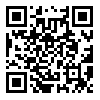目的 探讨胆道闭锁患儿行肝门空肠吻合术(KP)术后感染发生情况及其危险因素。方法 回顾性分析行KP手术治疗的397例胆道闭锁患儿临床资料,根据术后是否发生感染分为非感染组(n=159)和感染组(n=238)。对感染组进行亚组分析,并比较非感染组和感染组的相关临床资料,采用多因素Logistic回归模型分析胆道闭锁患儿KP术后发生感染的危险因素。结果 397例胆道闭锁患儿KP术后感染的发生率为59.9%(238/397),胆管炎发生率为57.2%(227/397)。感染组术前体重、术前γ⁃谷氨酰转肽酶高于非感染组,早期感染组术前血清总胆汁酸水平、术前体重及术前身高高于晚期感染组(P<0.05)。多因素Logistic回归分析结果显示,术前高体重、术前高总胆红素、术前低AST水平是胆道闭锁患儿 KP术后发生感染的危险因素(P<0.05)。结论 术前高体重、术前高总胆红素和术前低AST水平是胆道闭锁患儿KP术后发生感染的危险因素。
广西医学 页码:686-694
作者机构:蒙宣宇,硕士,主治医师,研究方向为儿童消化系统疾病。
基金信息:广西壮族自治区卫生健康委员会自筹经费科研课题(Z⁃A20220282);广西科技计划项目(桂科AD22035219)
- 中文简介
- 英文简介
- 参考文献
Objective To explore the occurrence status of infection after Kasai procedure (KP) in children with biliary atresia and its risk factors. Methods A retrospective study was performed to analyze the clinical data of 397 children with biliary atresia receiving KP, and children were assigned to non⁃infection group (159 cases) or infection group (238 cases) according to the presence of infection occurrence after surgery. The subgroup analysis was performed on the infection group, and relevant clinical data were compared between the non⁃infection group and the infection group. The multivariate Logistic regression model was adopted to analyze the risk factors for children with biliary atresia suffering from infection after KP. Results The incidence rate of infection among 397 children with biliary atresia after KP was 59.9% (238/397), and the incidence rate of cholangitis was 57.2% (227/397). The preoperative body weight and gamma⁃glutamyl transpeptidase of the infection group was higher than those of the non⁃infection group, and the preoperative serum total bile acid level, preoperative body weight, and preoperative height of the early infection group were higher than those of the late infection group (P<0.05). The multivariate Logistic regression analysis revealed that high preoperative body weight, high preoperative total bilirubin, and low preoperative AST level were the risk factors for the occurrence of infection in children with biliary atresia after KP (P<0.05). Conclusion High preoperative body weight, high preoperative total bilirubin and low preoperative AST level are the risk factors for the occurrence of infection in children with biliary atresia after KP.
-
无




 注册
注册 忘记密码
忘记密码 忘记用户名
忘记用户名 专家账号密码找回
专家账号密码找回 下载
下载 收藏
收藏
